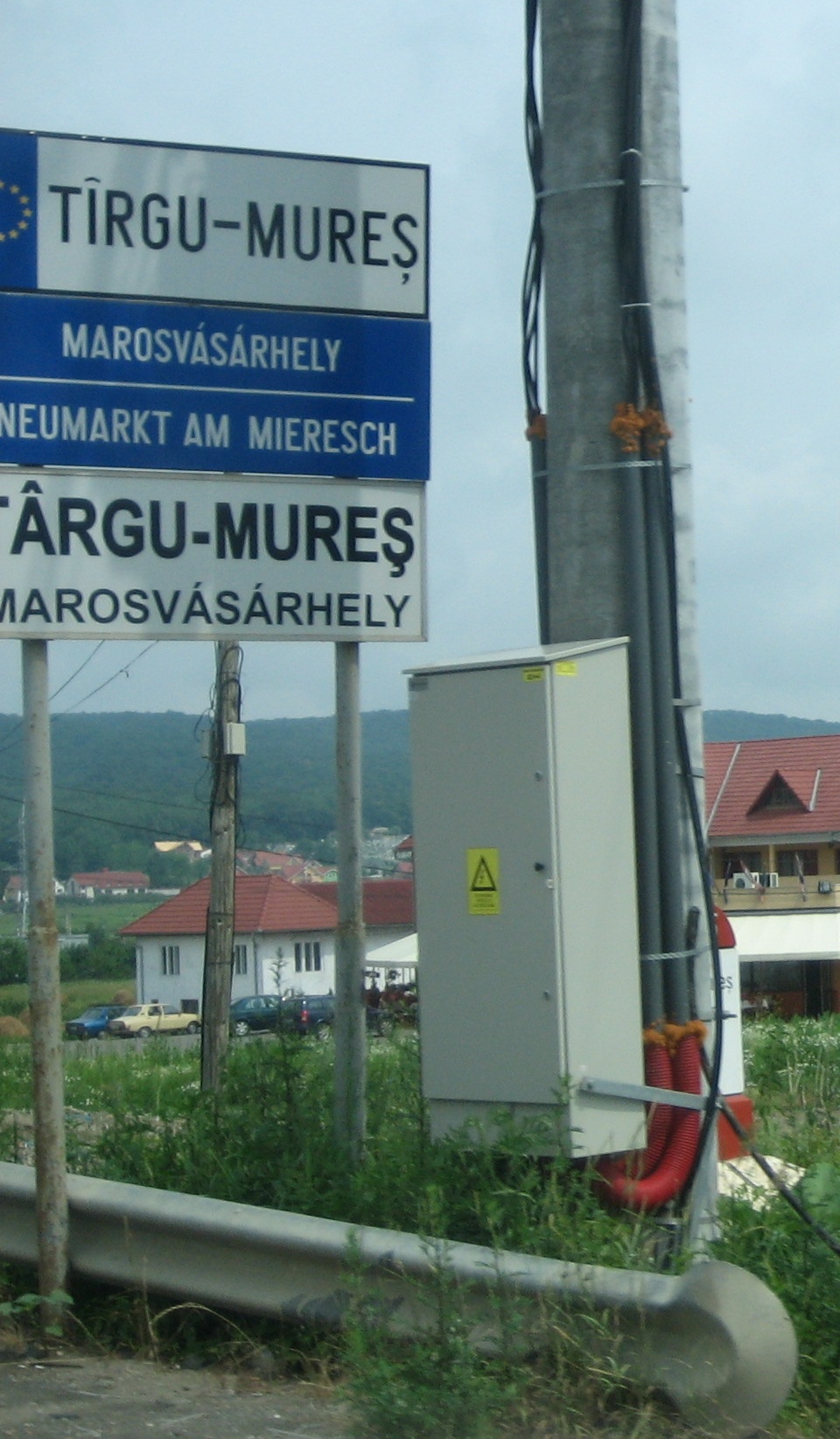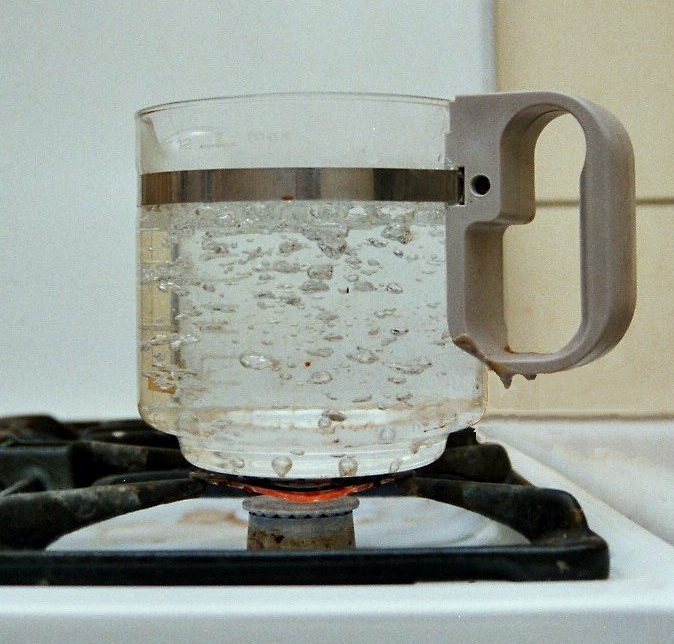|
Azomureș
Azomureș is the largest Romanian fertilizer producer. It is based in Târgu Mureș. The company was bought in 2002 by the largest fertilizer producer in Turkey, Transworld Fertilizers. In 2011, Azomureș was acquired by Swiss company Ameropa. In 1981, the department of photosensitive materials within the Târgu-Mureș Nitrogenous Fertilizer Plant was put into operation, having Konishiroku Japanese license. Ethnic hiring controversies Since its establishment, the ratio of Romanian workers to Hungarian workers in the plant has been significantly higher, estimated at 90% or even higher, if in addition to skilled workers are added technical and administrative staff.''Translations on Eastern Europe political, sociological, and military affairs, No, 1404-A'', U.S. Joint Publications Research Service, National Technical Information Service Department of Commerce, Springfield, Virginia, 22 June 1977, p. 37 This phenomenon is explained by the fact that the authorities that followed a ... [...More Info...] [...Related Items...] OR: [Wikipedia] [Google] [Baidu] |
Azomureș (photosensitive Materials)
Azomureș (or AZO) was the only brand of Photography, photosensitive materials from Romania, produced by Azomureș, Combinatul de Îngrășăminte Azotoase Târgu-Mureș ( en, Târgu-Mureș Nitrogenous Fertilizer Plant) between 1981 and 2003. The photographic materials were made in a separate section of the chemical plant, in the northern part of Târgu Mureș, using Japanese licensed production. The decision to locate the factory in this city was based on the tradition in photographic art and the existence of an older company in the field. The main products were black and white and color photographic paper and Photographic film, films for general photography, industrial and medical use and black and white and color Film stock, cinematographic films. The factory has stood out as one of the newest companies of its kind in the world. Due to low demand for film in the early 2000s, outdated production technology and debt, the department was closed in 2003. History Context In T� ... [...More Info...] [...Related Items...] OR: [Wikipedia] [Google] [Baidu] |
Târgu Mureș
Târgu Mureș (, ; hu, Marosvásárhely ) is the seat of Mureș County in the historical region of Transylvania, Romania. It is the 16th largest Romanian city, with 134,290 inhabitants as of the 2011 census. It lies on the Mureș River, the second longest river in Romania (after the Danube). Names and etymology The current Romanian name of the city, ''Târgu Mureș'', is the equivalent of the Hungarian ''Marosvásárhely'', both meaning "market on the Mureș (Maros) iver. ''Târg'' means "market" in Romanian and ''vásárhely'' means "marketplace" in Hungarian. Local Hungarians often shorten ''Marosvásárhely'' to ''Vásárhely'' in speech. The Jesuit priest Martin Szentiványi provides the first known written reference naming the city; in his work ''Dissertatio Paralipomenonica Rerum Memorabilium Hungariae'' (written in 1699) he records the name as ''Asserculis'' by stating, in Latin, ''Asserculis, hoc est Szekely Vasarhely'', meaning, ''Asserculis, here is Szekel ... [...More Info...] [...Related Items...] OR: [Wikipedia] [Google] [Baidu] |
Hungarians
Hungarians, also known as Magyars ( ; hu, magyarok ), are a nation and ethnic group native to Hungary () and historical Hungarian lands who share a common culture, history, ancestry, and language. The Hungarian language belongs to the Uralic language family. There are an estimated 15 million ethnic Hungarians and their descendants worldwide, of whom 9.6 million live in today's Hungary. About 2–3 million Hungarians live in areas that were part of the Kingdom of Hungary before the Treaty of Trianon in 1920 and are now parts of Hungary's seven neighbouring countries, Slovakia, Ukraine, Romania, Serbia, Croatia, Slovenia, and Austria. Significant groups of people with Hungarian ancestry live in various other parts of the world, most of them in the United States, Canada, Germany, France, the United Kingdom, Chile, Brazil, Australia, and Argentina. Hungarians can be divided into several subgroups according to local linguistic and cultural characteristics; subgroups with ... [...More Info...] [...Related Items...] OR: [Wikipedia] [Google] [Baidu] |
Companies Of Mureș County
A company, abbreviated as co., is a legal entity representing an association of people, whether natural, legal or a mixture of both, with a specific objective. Company members share a common purpose and unite to achieve specific, declared goals. Companies take various forms, such as: * voluntary associations, which may include nonprofit organizations * business entities, whose aim is generating profit * financial entities and banks * programs or educational institutions A company can be created as a legal person so that the company itself has limited liability as members perform or fail to discharge their duty according to the publicly declared incorporation, or published policy. When a company closes, it may need to be liquidated to avoid further legal obligations. Companies may associate and collectively register themselves as new companies; the resulting entities are often known as corporate groups. Meanings and definitions A company can be defined as an "arti ... [...More Info...] [...Related Items...] OR: [Wikipedia] [Google] [Baidu] |
Privatized Companies In Romania
Privatization (also privatisation in British English) can mean several different things, most commonly referring to moving something from the public sector into the private sector. It is also sometimes used as a synonym for deregulation when a heavily regulated private company or industry becomes less regulated. Government functions and services may also be privatised (which may also be known as "franchising" or "out-sourcing"); in this case, private entities are tasked with the implementation of government programs or performance of government services that had previously been the purview of state-run agencies. Some examples include revenue collection, law enforcement, water supply, and prison management. Another definition is that privatization is the sale of a state-owned enterprise or municipally owned corporation to private investors; in this case shares may be traded in the public market for the first time, or for the first time since an enterprise's previous nationali ... [...More Info...] [...Related Items...] OR: [Wikipedia] [Google] [Baidu] |
Chemical Companies Established In 1962
A chemical substance is a form of matter having constant chemical composition and characteristic properties. Some references add that chemical substance cannot be separated into its constituent elements by physical separation methods, i.e., without breaking chemical bonds. Chemical substances can be simple substances (substances consisting of a single chemical element), chemical compounds, or alloys. Chemical substances are often called 'pure' to set them apart from mixtures. A common example of a chemical substance is pure water; it has the same properties and the same ratio of hydrogen to oxygen whether it is isolated from a river or made in a laboratory. Other chemical substances commonly encountered in pure form are diamond (carbon), gold, table salt (sodium chloride) and refined sugar (sucrose). However, in practice, no substance is entirely pure, and chemical purity is specified according to the intended use of the chemical. Chemical substances exist as solids, liquids, ... [...More Info...] [...Related Items...] OR: [Wikipedia] [Google] [Baidu] |
Chemical Companies Of Romania
A chemical substance is a form of matter having constant chemical composition and characteristic properties. Some references add that chemical substance cannot be separated into its constituent elements by physical separation methods, i.e., without breaking chemical bonds. Chemical substances can be simple substances (substances consisting of a single chemical element), chemical compounds, or alloys. Chemical substances are often called 'pure' to set them apart from mixtures. A common example of a chemical substance is pure water; it has the same properties and the same ratio of hydrogen to oxygen whether it is isolated from a river or made in a laboratory. Other chemical substances commonly encountered in pure form are diamond (carbon), gold, table salt (sodium chloride) and refined sugar (sucrose). However, in practice, no substance is entirely pure, and chemical purity is specified according to the intended use of the chemical. Chemical substances exist as solid ... [...More Info...] [...Related Items...] OR: [Wikipedia] [Google] [Baidu] |
Oltenia
Oltenia (, also called Lesser Wallachia in antiquated versions, with the alternative Latin names ''Wallachia Minor'', ''Wallachia Alutana'', ''Wallachia Caesarea'' between 1718 and 1739) is a historical province and geographical region of Romania in western Wallachia. It is situated between the Danube, the Southern Carpathians and the Olt River, Olt river. History Ancient times Initially inhabited by Dacians, Oltenia was incorporated in the Roman Empire (106, at the end of the Trajan's Dacian Wars, Dacian Wars; ''see Roman Dacia''). In 129, during Hadrian's rule, it formed Dacia Inferior, one of the two divisions of the province (together with Dacia Superior, in today's Transylvania); Marcus Aurelius' administrative reform made Oltenia one of the three new divisions (''tres Daciae'') as Dacia Malvensis, its capital and chief city being named Romula. It was colonized with veterans of the Roman legions. The Romans withdrew their administration south of the Danube at the end o ... [...More Info...] [...Related Items...] OR: [Wikipedia] [Google] [Baidu] |
Southern Carpathians
The Southern Carpathians (also known as the Transylvanian Alps; ro, Carpații Meridionali ; hu, Déli-Kárpátok) are a group of mountain ranges located in southern Romania. They cover the part of the Carpathian Mountains located between the Prahova River in the east and the Timiș and Cerna Rivers in the west. To the south they are bounded by the Balkan mountain range in eastern Serbia. Heights The Southern Carpathians are the second highest group of mountains in the Carpathian Mountain range (after Tatra), reaching heights of over 2,500 meters. Although considerably smaller than the Alps, they are classified as having an alpine landscape. Their high mountain character, combined with great accessibility, makes them popular with tourists and scientists. The highest peaks are: * Moldoveanu Peak, 2,544 metres – Făgăraș Mountains * Negoiu, 2,535 metres – Făgăraș Mountains * Parângu Mare, 2,519 metres – Parâng Mountains * Omu Peak 2,514 metres – Buceg ... [...More Info...] [...Related Items...] OR: [Wikipedia] [Google] [Baidu] |
Industrialisation
Industrialisation ( alternatively spelled industrialization) is the period of social and economic change that transforms a human group from an agrarian society into an industrial society. This involves an extensive re-organisation of an economy for the purpose of manufacturing. Historically industrialization is associated with increase of polluting industries heavily dependent on fossil fuels. With the increasing focus on sustainable development and green industrial policy practices, industrialization increasingly includes technological leapfrogging, with direct investment in more advanced, cleaner technologies. The reorganization of the economy has many unintended consequences both economically and socially. As industrial workers' incomes rise, markets for consumer goods and services of all kinds tend to expand and provide a further stimulus to industrial investment and economic growth. Moreover, family structures tend to shift as extended families tend to no longer ... [...More Info...] [...Related Items...] OR: [Wikipedia] [Google] [Baidu] |
Romanians
The Romanians ( ro, români, ; dated exonym '' Vlachs'') are a Romance-speaking ethnic group. Sharing a common Romanian culture and ancestry, and speaking the Romanian language, they live primarily in Romania and Moldova. The 2011 Romanian census found that just under 89% of Romania's citizens identified themselves as ethnic Romanians. In one interpretation of the 1989 census results in Moldova, the majority of Moldovans were counted as ethnic Romanians.''Ethnic Groups Worldwide: A Ready Reference Handbook By'' David Levinson, Published 1998 – Greenwood Publishing Group.At the time of the 1989 census, Moldova's total population was 4,335,400. The largest nationality in the republic, ethnic Romanians, numbered 2,795,000 persons, accounting for 64.5 percent of the population. Source U.S. Library of Congress "however it is one interpretation of census data results. The subject of Moldovan vs Romanian ethnicity touches upon the sensitive topic ofMoldova's national i ... [...More Info...] [...Related Items...] OR: [Wikipedia] [Google] [Baidu] |





